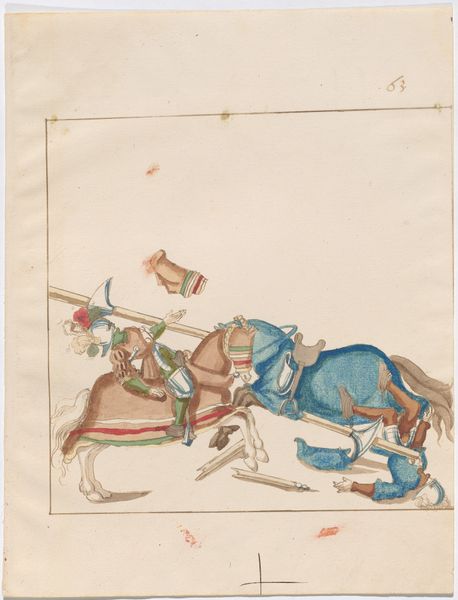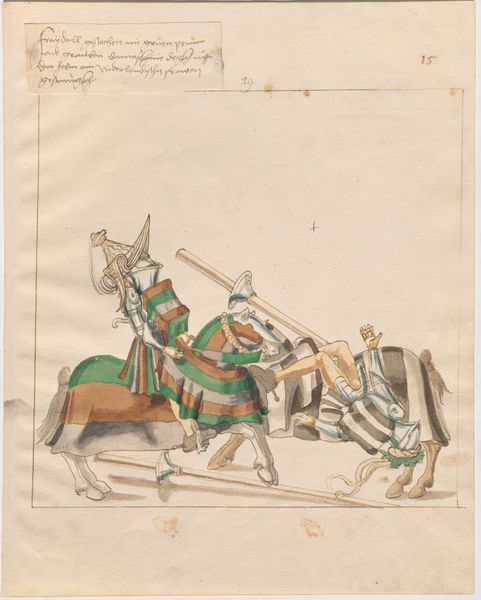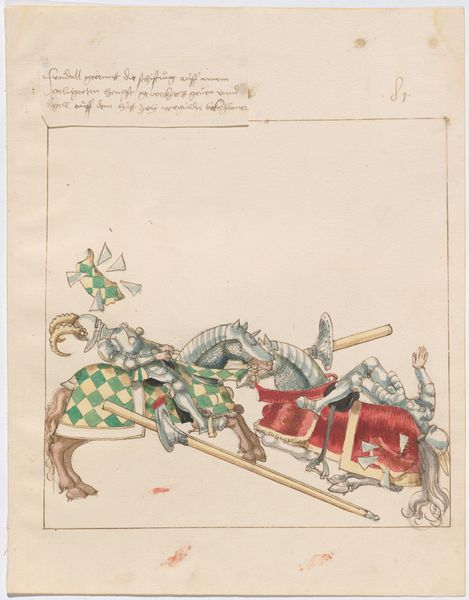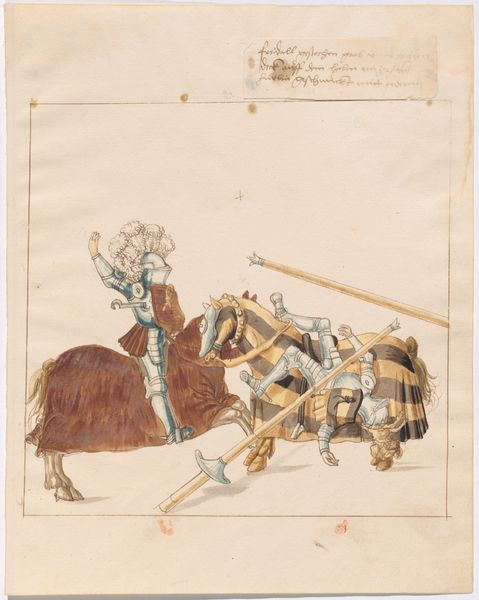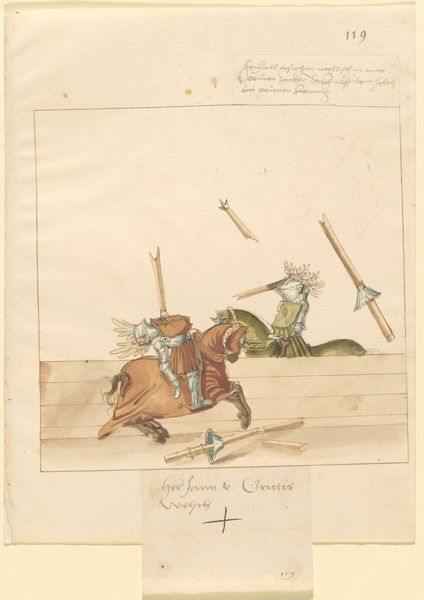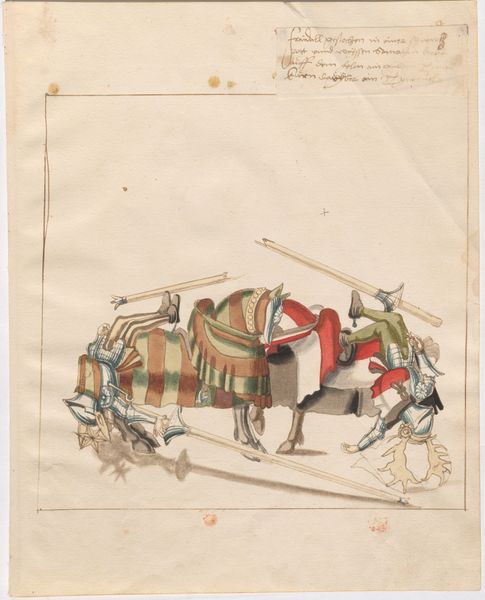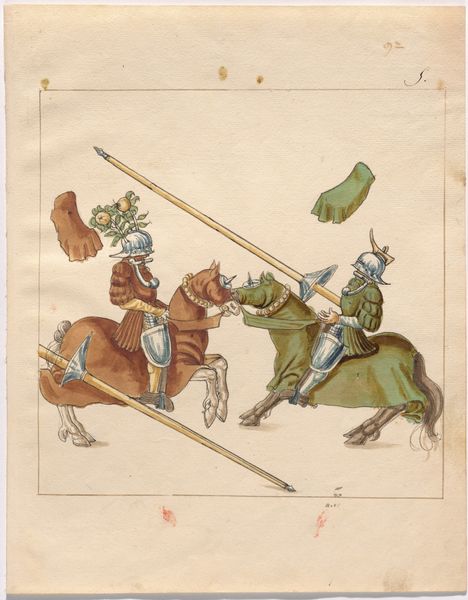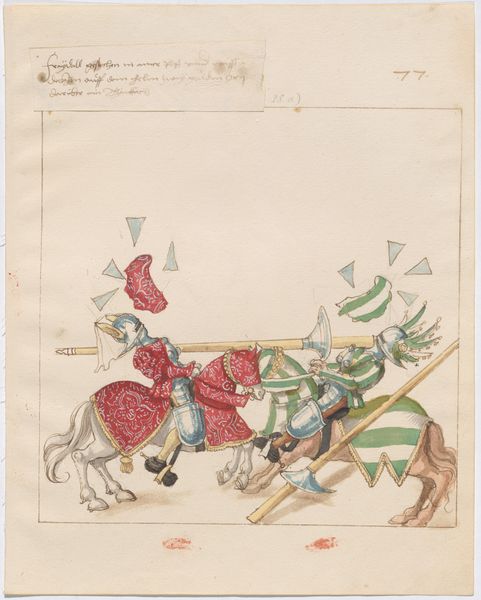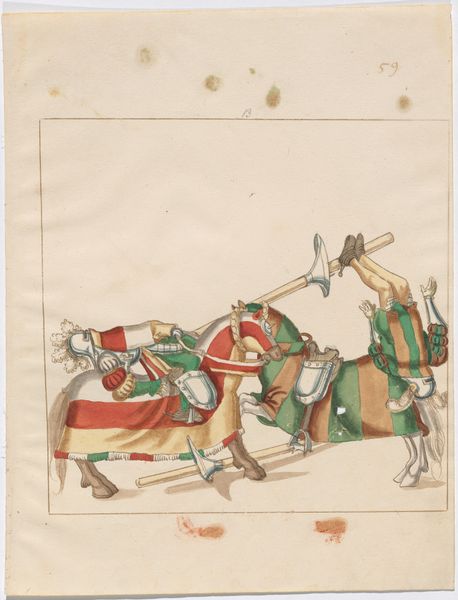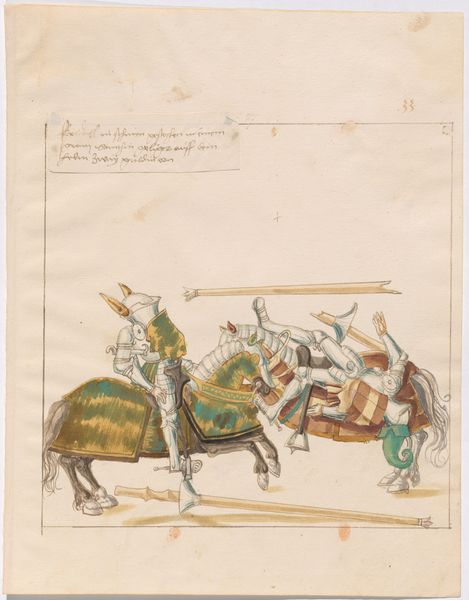
drawing, coloured-pencil, watercolor
#
drawing
#
coloured-pencil
#
medieval
#
water colours
#
narrative-art
#
figuration
#
watercolor
#
coloured pencil
#
history-painting
#
northern-renaissance
Dimensions: sheet: 33.1 × 26.2 cm (13 1/16 × 10 5/16 in.)
Copyright: National Gallery of Art: CC0 1.0
Editor: Here we have "German Joust of Peace," made around 1512-1515 by an anonymous artist, rendered with watercolor and coloured pencil. The composition seems… well, violent! Two knights are tumbling off their horses. What strikes you about this image? Curator: Indeed, the chaotic scene is quite telling. Consider the title – “Joust of Peace.” What does this juxtaposition suggest about the era’s understanding of peace itself? This drawing emerges during a period of intense social and political maneuvering. Images of chivalry, like this joust, were carefully constructed and widely disseminated. Editor: So it’s less about an actual event and more about projecting a certain image? Curator: Precisely! These jousts served as political theatre, solidifying alliances, showcasing power, and constructing idealized visions of knighthood. What about the visual style speaks to that? Editor: I notice the incredible detail in the armour and horse trappings. Is that accuracy important? Curator: Absolutely. The meticulous detail suggests a desire for legitimacy and a claim to historical precedent. It connects the ruling class to an imagined, glorious past. The very act of depiction in watercolour and coloured pencil elevated the joust, lending it permanence and gravitas. But I wonder about the function of this artwork; where might it have been displayed or stored? Editor: Perhaps as a record, or a model for something bigger? Curator: Possibly, or maybe even part of a manuscript illuminating specific historical traditions of knightly tournaments, re-establishing those traditions through visualisation of a collective imagined past. Looking at this work has been quite insightful regarding image and function in 16th century visual arts.
Comments
No comments
Be the first to comment and join the conversation on the ultimate creative platform.

